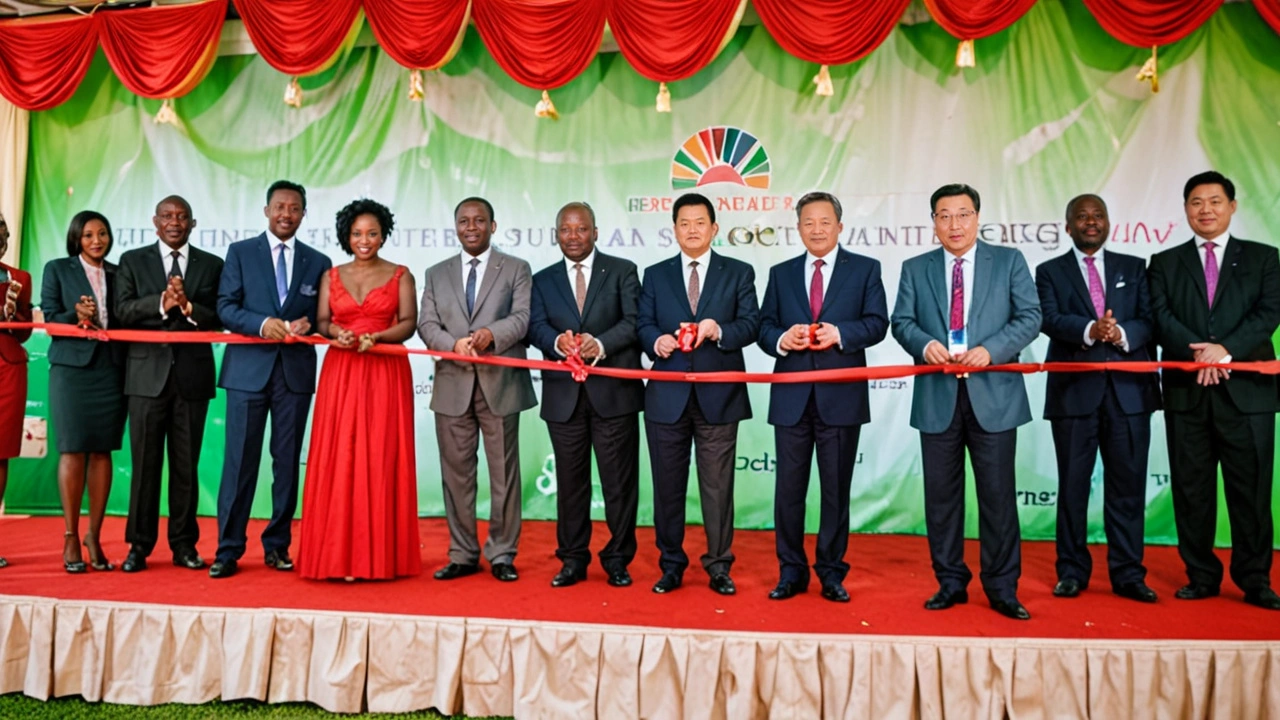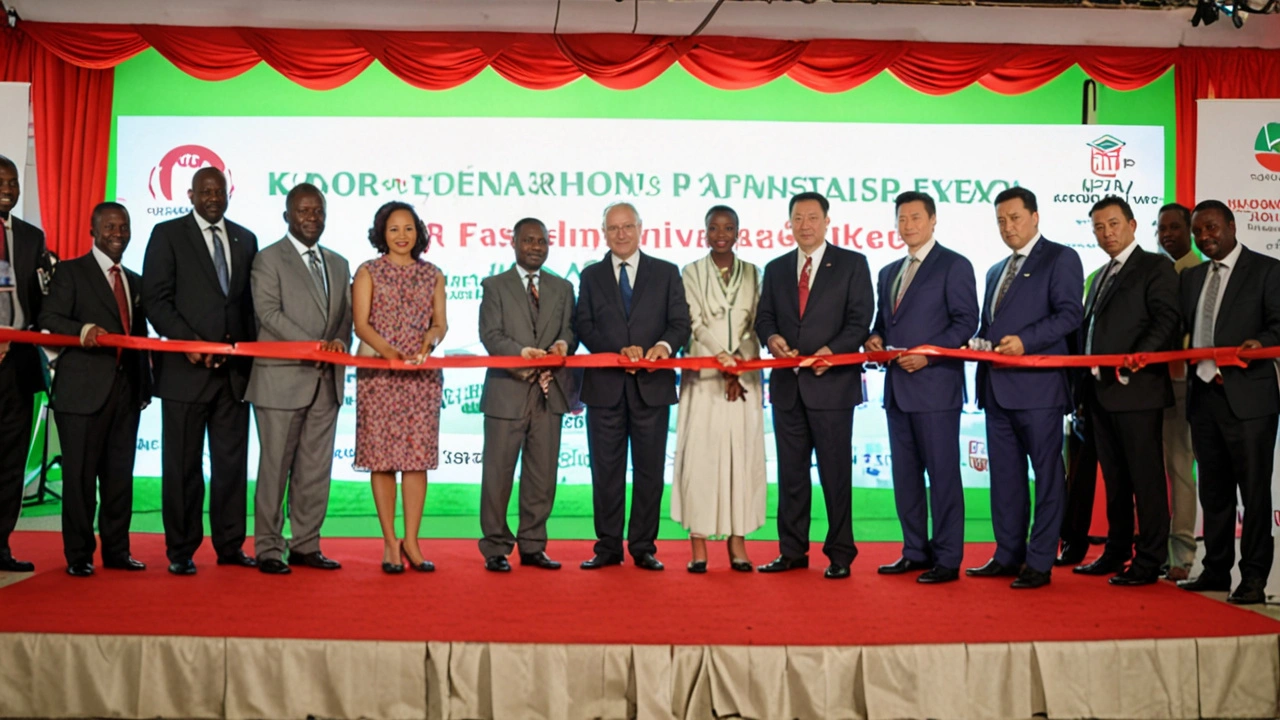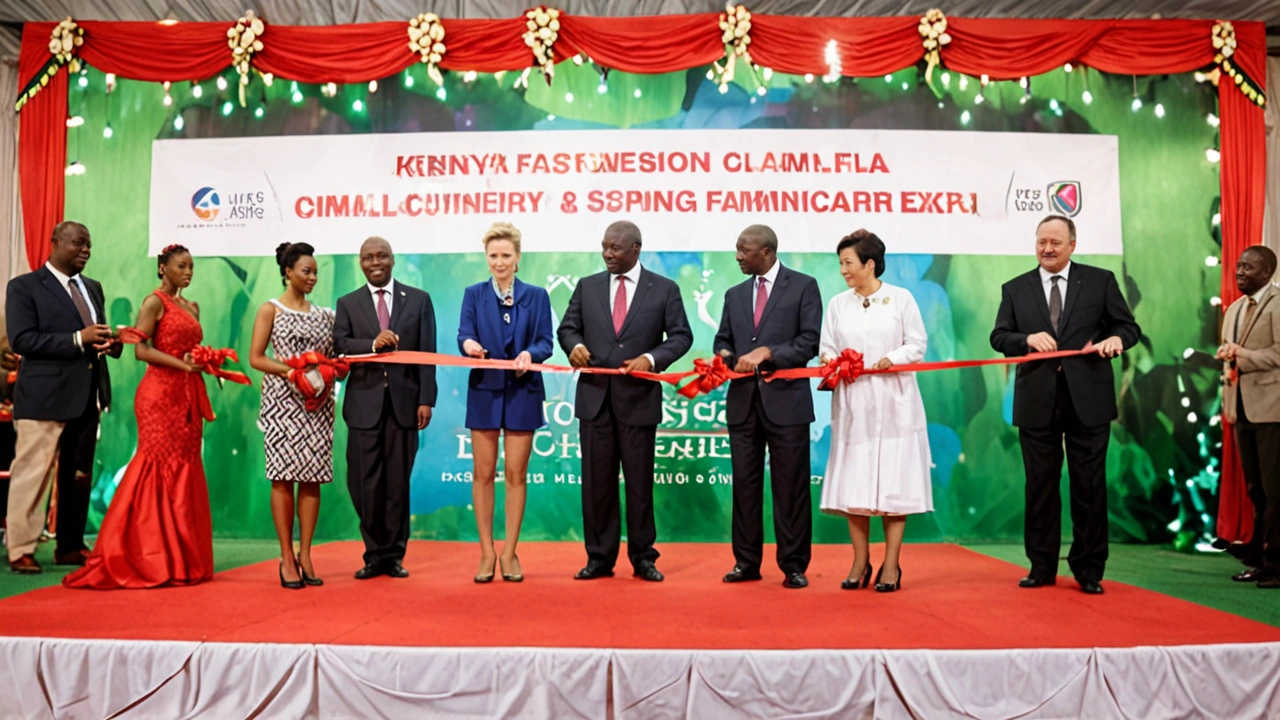Introduction: A Promising Partnership
In a groundbreaking move, Kenya and China have formalized a strategic partnership geared towards strengthening their fashion and lifestyle industries. This collaboration aims to harness the potential of both nations through shared expertise, resources, and innovative approaches. The agreement underscores the importance of international alliances in spurring economic growth and elevating industry standards.
Historical Context: Intertwined Economic Goals
The partnership between Kenya and China is not an isolated event but a continuation of a long-standing relationship rooted in mutual economic goals. Over the past decade, China has been significantly involved in various infrastructural projects in Kenya, including the construction of highways, railways, and ports. This new focus on fashion and lifestyle sectors is a testament to the evolving dynamics of their bilateral relations. It transcends mere economic transactions, aiming for a deeper cultural and intellectual exchange that will also impact other areas such as technology, education, and tourism.

The Mechanics of the Collaboration
At the heart of this partnership lies a multifaceted approach designed to address various aspects of the fashion and lifestyle industries. This includes skill development programs, exchange initiatives, and co-investment in startups. Kenyan fashion designers will have the opportunity to participate in training programs in China, where they will learn about advanced textile techniques, sustainable practices, and innovative design methodologies. Furthermore, Chinese lifestyle brands will explore the rich cultural heritage of Kenya for inspiration, bringing new dimensions to their product lines.
Skill Development and Training Programs
One of the core components of this collaboration is focused on skill development and training. Kenyan designers and artisans will be enrolled in specialized courses facilitated by veteran Chinese fashion experts. These programs will cover a wide array of topics, from cutting-edge fabric technology to the latest trends in sustainable fashion. By equipping Kenyan professionals with these skills, the partnership aims to foster creativity and innovation in Kenya’s fashion scene, making it more competitive on the global stage.
Exchange Programs and Cultural Integration
A robust exchange program forms another critical aspect of the partnership. Artisans, designers, and craftsmen from both countries will engage in periodic exchanges that allow them to learn from each other’s practices and traditions. For instance, Kenyan artisans known for their beadwork and textile patterns will collaborate with Chinese designers to create unique fusion collections. This cultural integration will enrich both countries' fashion industries, making them more diverse and inclusive.
Economic Implications: Mutual Growth
Beyond the direct benefits to the fashion and lifestyle sectors, this partnership has broader economic implications. It is expected to create numerous job opportunities in both countries, particularly for young people. In Kenya, where youth unemployment remains a critical issue, this collaboration could prove to be a game-changer. The influx of Chinese investment in the fashion and lifestyle sectors will likely trigger a ripple effect, encouraging more foreign direct investments in other industries as well.
Moreover, the rise in joint ventures and co-investments will stimulate local economies by creating demand for raw materials, manufacturing, and retail platforms. Small and medium enterprises (SMEs) in both countries stand to benefit significantly from this, as they will gain access to new markets and networks. This, in turn, will enhance economic resilience and promote sustainable growth.

Industry Outcomes: Setting New Standards
International collaborations such as this one set new standards for industry outcomes by encouraging the adoption of best practices. For example, the focus on sustainable fashion aligns with global trends towards environmentally responsible and ethical production. Kenyan and Chinese designers are expected to lead the way in innovative, eco-friendly fashion, setting an example for other nations to follow. The partnership aims to elevate the industry standards in both countries, making them front-runners in fashion innovation and lifestyle enhancements.
Sustainability and Eco-Friendly Practices
One of the pivotal goals of this collaboration is to champion sustainable and eco-friendly practices within the fashion industry. China's advancements in sustainable textile technologies will be integrated into Kenyan production processes, minimizing environmental impact. The collaboration will focus on reducing waste, recycling materials, and adopting sustainable sourcing practices. This emphasis on sustainability is not merely a trend but a long-term commitment to responsible business practices.
Technological Innovations
Technological innovations will play a crucial role in the success of this partnership. From smart textiles to AI-driven design tools, the collaboration will bring the latest technological advancements to the forefront of the fashion industry. Kenyan designers and manufacturers will have access to state-of-the-art technology, enabling them to create cutting-edge designs and improve production efficiency. This technological leap will help position Kenyan fashion on the global map as a hub of innovation and creativity.
Conclusion: A Vision for the Future
The collaboration between Kenya and China in the fashion and lifestyle industries is more than just a business agreement; it is a vision for the future. By leveraging each other's strengths and resources, both countries are poised to achieve significant progress in their respective sectors. This partnership serves as a model for other nations, demonstrating the immense potential of international collaborations in driving economic growth, fostering innovation, and elevating industry standards.
In an increasingly globalized world, such partnerships highlight the importance of cooperation and mutual support. As Kenya and China continue to work together, their combined efforts will pave the way for a more prosperous and inclusive future, not only for their fashion and lifestyle industries but for their economies as a whole.


Anita Drake
July 12, 2024 AT 18:19Celebrating the collaboration feels like watching two vibrant cultures dance together on a shared runway. The exchange of textile techniques can enrich both design scenes and opens doors for artisans who rarely get a global platform. It's also a chance for Kenyan beadwork to inspire new patterns that Chinese brands might incorporate, adding fresh storytelling to their collections. This partnership could become a model for other creative industries looking to bridge continents. Ultimately, we all win when creativity knows no borders.
Eduardo Lopez
July 18, 2024 AT 02:06Wow, this is huge! The sheer scale of resources flowing between Kenya and China could totally revamp the fashion game in East Africa. Imagine the buzz when Nairobi showcases tech‑infused garments alongside traditional prints. Plus, Chinese investors seem keen on sustainability, which could boost eco‑friendly projects on the ground. All in all, it feels like a win‑win for style, jobs, and the planet.
Nancy Perez de Lezama
July 23, 2024 AT 09:53Interesting partnership.
Matt Heitz
July 28, 2024 AT 17:39Collaborations like this often masquerade as progressive, yet they risk turning culture into commodity. The promise of skill development sounds noble, but without clear ownership, Kenyan designers may become mere labor for Chinese profit. When Chinese factories dominate supply chains, local artisans could find themselves squeezed out, despite the rhetoric of mutual growth. Sustainability is another buzzword that can be hollow if profit margins dictate material choices. Moreover, the influx of foreign capital frequently inflates costs, making local markets less accessible to everyday consumers. While job creation is touted, many positions might be low‑wage, temporary roles rather than the skilled careers the article hints at. Intellectual property concerns also loom large; designs inspired by Kenyan heritage could be patented abroad, limiting domestic benefit. Cultural exchange is valuable, yet it should be based on respect, not extraction. Without enforceable agreements protecting artisans, the power imbalance remains unchanged. The tech side-smart textiles and AI-could indeed boost efficiency, but only if knowledge transfer is genuine, not just a one‑way demo. The risk is that Kenyan firms become dependent on Chinese technology, losing autonomy. Environmental promises are laudable, but Chinese textile production has its own pollution issues, which could simply relocate the problem. Funding should prioritize community‑led initiatives, not solely corporate ventures. Transparency about where money goes would reassure skeptics. Ultimately, the success of this partnership hinges on equitable structures, not just grand announcements.
Susan Mark
August 3, 2024 AT 01:26From a practical standpoint, training programs can equip designers with new tools that were previously out of reach. The blend of Kenyan textile heritage with Chinese manufacturing capacity could lead to products that appeal to both local and global shoppers. It would be great to see scholarship opportunities for young creatives to study abroad, fostering long‑term relationships. If the initiative emphasizes fair trade principles, it might set a new standard for cross‑border collaborations.
Jason Jennings
August 8, 2024 AT 09:13Honestly, the hype feels a bit overstated. I can see Chinese brands swooping in, rebranding Kenyan motifs as their own. If the goal is genuine partnership, we’ll need solid contracts that protect local creators, not just vague promises.
Diego Vargas
August 13, 2024 AT 16:59What’s cool is the potential for smart fabrics to be integrated with traditional designs. Think of bead‑embellished jackets that can change color based on temperature. That could put Kenyan fashion on the tech map.
Alex Lee
August 19, 2024 AT 00:46This seems like a marketing stunt. Without clear metrics, it’s hard to say if it will actually create jobs or just boost headlines.
Vida Yamini
August 24, 2024 AT 08:33When I think about the cultural layers involved, it reminds me of a tapestry where each thread represents a story. The exchange programs could allow artisans from Nairobi to learn about Chinese dyeing techniques, while designers from Shanghai might incorporate the rhythmic patterns of Maasai beadwork into contemporary collections. Such mutual learning not only diversifies product lines but also fosters deeper appreciation for each other's histories. It’s essential, however, that the narrative stays authentic and doesn’t get diluted by commercial pressures. Keeping community voices at the forefront ensures the collaboration remains rooted in genuine exchange rather than superficial appropriation.
James Lawyer
August 29, 2024 AT 16:19Legally speaking, both nations should draft bilateral agreements that specify intellectual property rights, profit‑sharing mechanisms, and dispute resolution processes. Clear frameworks can prevent future conflicts and ensure that benefits are equitably distributed. Additionally, setting up joint oversight committees could provide transparency and accountability throughout the partnership’s lifespan.
Abby Culbertson
September 4, 2024 AT 00:06Looks promising.
Awolumate Muhammed Abayomi
September 9, 2024 AT 07:53Let’s keep the momentum going! Young designers need platforms to showcase their work, and this partnership could be that springboard. If we can organize pop‑up events in both Nairobi and Shanghai, it would give creators real exposure and build a loyal customer base across continents.
Josh Tate
September 14, 2024 AT 15:39I hear the excitement and also the concerns. It’s vital that we listen to the voices of those on the ground-artisans, tailors, and students-so the programs truly empower them rather than just serving corporate interests.
John Smith
September 19, 2024 AT 23:26From a market perspective, merging Chinese manufacturing efficiency with Kenyan design aesthetics could create a niche that appeals to eco‑conscious consumers worldwide. Scaling that model will require robust logistics and transparent supply chains.
Alex Soete
September 25, 2024 AT 07:13Energy is high around this news! If we rally local fashion schools to partner with Chinese tech institutes, we could see a new wave of graduates who are fluent in both creative design and digital manufacturing tools.
Cara McKinzie
September 30, 2024 AT 14:59Drama everywhere, but real impact matters.
Joseph Conlon
October 5, 2024 AT 22:46While many celebrate this partnership, it's worth noting that such alliances can sometimes mask deeper geopolitical motives. China's increasing foothold in African markets extends beyond fashion; it's part of a broader strategy to secure resources and influence. If Kenya becomes overly dependent on Chinese capital, it may compromise its policy autonomy. Moreover, the cultural narrative can be co‑opted, presenting African aesthetics as exotic backdrops for foreign brands. The promised job creation should be scrutinized-are these positions sustainable, or are they temporary contract gigs? Transparency in profit distribution is crucial; otherwise, the wealth generated may flow predominantly back to Chinese investors. Lastly, environmental safeguards need strict enforcement; otherwise, any "green" initiatives risk becoming greenwashing. A balanced approach would involve diversified partnerships, not just a single dominant player.
Mohit Singh
October 11, 2024 AT 06:33The collaboration could spark new trends, but we must stay vigilant against any overreach that could stifle local creativity.
Damian Liszkiewicz
October 16, 2024 AT 14:19🌍 It's inspiring to see two nations unite over shared passion for design and sustainability. When we blend traditional craftsmanship with modern tech, we not only create beautiful products but also forge deeper cultural connections. Let’s hope this initiative remains inclusive and transparent, giving voice to the artisans who are the true heart of this venture. 🤝